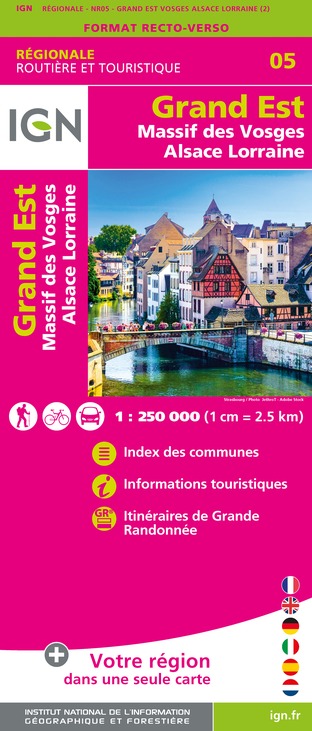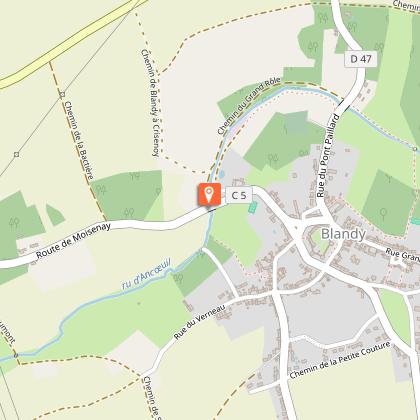Alert
Alerts
Type of practice
Walking
Very easy
1h
Presentation
Map
Points of interest
Cirkwi brief's
Ratings and reviews
See around
Stroll in Bombon


Credit : CCBRC
The Cirkwi brief
Discover the Historic Charm of Bombon on Foot
Embark on a mesmerizing journey through the picturesque landscapes and rich history of Bombon. This quaint village, nestled in the heart of the Val d'Ancœur, offers a unique blend of rural traditions and historical significance. Proposed by the Communauté de Communes Brie des Rivières et Châteaux, this walking tour invites travelers to delve into a borough where vineyards once flourished and now, agricultural prowess reigns. Experience the tranquility of ancient streets, marvel at a 12th-century church, and get captivated by the majestic château that has stood the tests of time. Feel the essence of rural France and its historical vibrations in every step.
Path Details: Numbers and Gradient
Covering a distance of 2.9 km with an elevation ranging between 93 to 114 meters above sea level, this walk is perfect for enthusiasts of all levels. The total ascent and descent vary slightly, marked at 36 to 38 meters, presenting a gentle slope. The itinerary, curated by the Communauté de Communes Brie des Rivières et Châteaux, is unmarked, adding an element of adventure yet is straightforward, circling back to the starting point at Saint-Germain Church. Analyzed technically, this route is an excellent choice for a short, leisurely exploration of Bombon's historical gems.
Seasonal Tips and Safety Recommendations
Regardless of the season, Bombon's beauty is evergreen. However, spring offers a lush, vibrant setting, making it an ideal time for photography enthusiasts. Summer brings out the full grandeur of the countryside, though staying hydrated is key. Autumn surrounds you with a palette of colors, perfect for leisurely walks, while winter, often mild, still requires appropriate attire for colder days. Always ensure to wear comfortable footwear and carry water, especially during warmer months. Familiarize yourself with the route beforehand to enhance your experience, and respect private properties, particularly around the château.
A Walk Through History in Bombon
Bombon, a gem in the Brie region, is not just a village; it's a living museum showcasing rural traditions against a backdrop of significant historical events. The presence of the Allied Generals’ Headquarters during WWI and the Marshal Foch's strategic brilliance that led to the Allies' victory, earmarked Bombon as the “Cradle of Victory.” This village, with its ancient church and the historical château, is a testament to the resilience and evolution of rural France. The architectural and historical layers of Bombon offer a captivating glimpse into the past, enriching the walking experience with every step.
Regional Weather and Best Visit Times
Bombon experiences a temperate climate, characterized by mild winters and warm summers. Precipitation is relatively evenly distributed throughout the year, making Bombon a year-round destination. However, the best time to visit is between late spring and early autumn when the weather is most favorable for walking. During these months, temperatures are comfortable, and the natural scenery is at its peak, offering an unrivaled walking experience through the historical and natural landscapes of Bombon.
Embark on a mesmerizing journey through the picturesque landscapes and rich history of Bombon. This quaint village, nestled in the heart of the Val d'Ancœur, offers a unique blend of rural traditions and historical significance. Proposed by the Communauté de Communes Brie des Rivières et Châteaux, this walking tour invites travelers to delve into a borough where vineyards once flourished and now, agricultural prowess reigns. Experience the tranquility of ancient streets, marvel at a 12th-century church, and get captivated by the majestic château that has stood the tests of time. Feel the essence of rural France and its historical vibrations in every step.
Path Details: Numbers and Gradient
Covering a distance of 2.9 km with an elevation ranging between 93 to 114 meters above sea level, this walk is perfect for enthusiasts of all levels. The total ascent and descent vary slightly, marked at 36 to 38 meters, presenting a gentle slope. The itinerary, curated by the Communauté de Communes Brie des Rivières et Châteaux, is unmarked, adding an element of adventure yet is straightforward, circling back to the starting point at Saint-Germain Church. Analyzed technically, this route is an excellent choice for a short, leisurely exploration of Bombon's historical gems.
Seasonal Tips and Safety Recommendations
Regardless of the season, Bombon's beauty is evergreen. However, spring offers a lush, vibrant setting, making it an ideal time for photography enthusiasts. Summer brings out the full grandeur of the countryside, though staying hydrated is key. Autumn surrounds you with a palette of colors, perfect for leisurely walks, while winter, often mild, still requires appropriate attire for colder days. Always ensure to wear comfortable footwear and carry water, especially during warmer months. Familiarize yourself with the route beforehand to enhance your experience, and respect private properties, particularly around the château.
A Walk Through History in Bombon
Bombon, a gem in the Brie region, is not just a village; it's a living museum showcasing rural traditions against a backdrop of significant historical events. The presence of the Allied Generals’ Headquarters during WWI and the Marshal Foch's strategic brilliance that led to the Allies' victory, earmarked Bombon as the “Cradle of Victory.” This village, with its ancient church and the historical château, is a testament to the resilience and evolution of rural France. The architectural and historical layers of Bombon offer a captivating glimpse into the past, enriching the walking experience with every step.
Regional Weather and Best Visit Times
Bombon experiences a temperate climate, characterized by mild winters and warm summers. Precipitation is relatively evenly distributed throughout the year, making Bombon a year-round destination. However, the best time to visit is between late spring and early autumn when the weather is most favorable for walking. During these months, temperatures are comfortable, and the natural scenery is at its peak, offering an unrivaled walking experience through the historical and natural landscapes of Bombon.
Automatically generated.
IGN cards

2416SB - MELUN MORMANT
Editor : IGN
Collection : TOP 25 ET SÉRIE BLEUE
Scale : 1:25 000
13.90€

2516SB - NANGIS DONNEMARIE-DONTILLY
Editor : IGN
Collection : TOP 25 ET SÉRIE BLEUE
Scale : 1:25 000
13.90€

119 PARIS SENS PNR DU GÂTINAIS FRANÇAIS
Editor : IGN
Collection : TOP 100
Scale : 1:100 000
8.40€

190 PARIS CHANTILLY FONTAINEBLEAU
Editor : IGN
Collection : TOP 100
Scale : 1:100 000
8.40€

D75-95 ÎLE-DE-FRANCE OUEST
Editor : IGN
Collection : CARTES DÉPARTEMENTALES IGN
Scale : 1:150 000
5.90€

D77 SEINE-ET-MARNE
Editor : IGN
Collection : CARTES DÉPARTEMENTALES IGN
Scale : 1:150 000
5.90€

NR08 CENTRE-VAL DE LOIRE
Editor : IGN
Collection : CARTES RÉGIONALES IGN
Scale : 1:250 000
6.80€

NR05 GRAND EST RECTO/VERSO MASSIF DES VOSGES ALSACE LORRAINE
Editor : IGN
Collection : CARTES RÉGIONALES IGN
Scale : 1:250 000
6.80€

NR03 ÍLE DE FRANCE
Editor : IGN
Collection : CARTES RÉGIONALES IGN
Scale : 1:250 000
6.80€

NR04 - GRAND EST RECTO/VERSO ARDENNE CHAMPAGNE
Editor : IGN
Collection : CARTES RÉGIONALES IGN
Scale : 1:250 000
6.80€

EUROPE
Editor : IGN
Collection : DÉCOUVERTE DES PAYS DU MONDE IGN
Scale : 1:2 500 000
7.00€
Technical Information
Walking
Difficulty
Very easy
Duration
1h
Dist.
3 km
Type of practice
Walking
Very easy
1h
Show more
Altimetric profile
Starting point
9
Place de l'église
,
77720
Bombon
Lat : 48.574463Lng : 2.858589
Points of interest
Data author
Ratings and reviews
To see around







